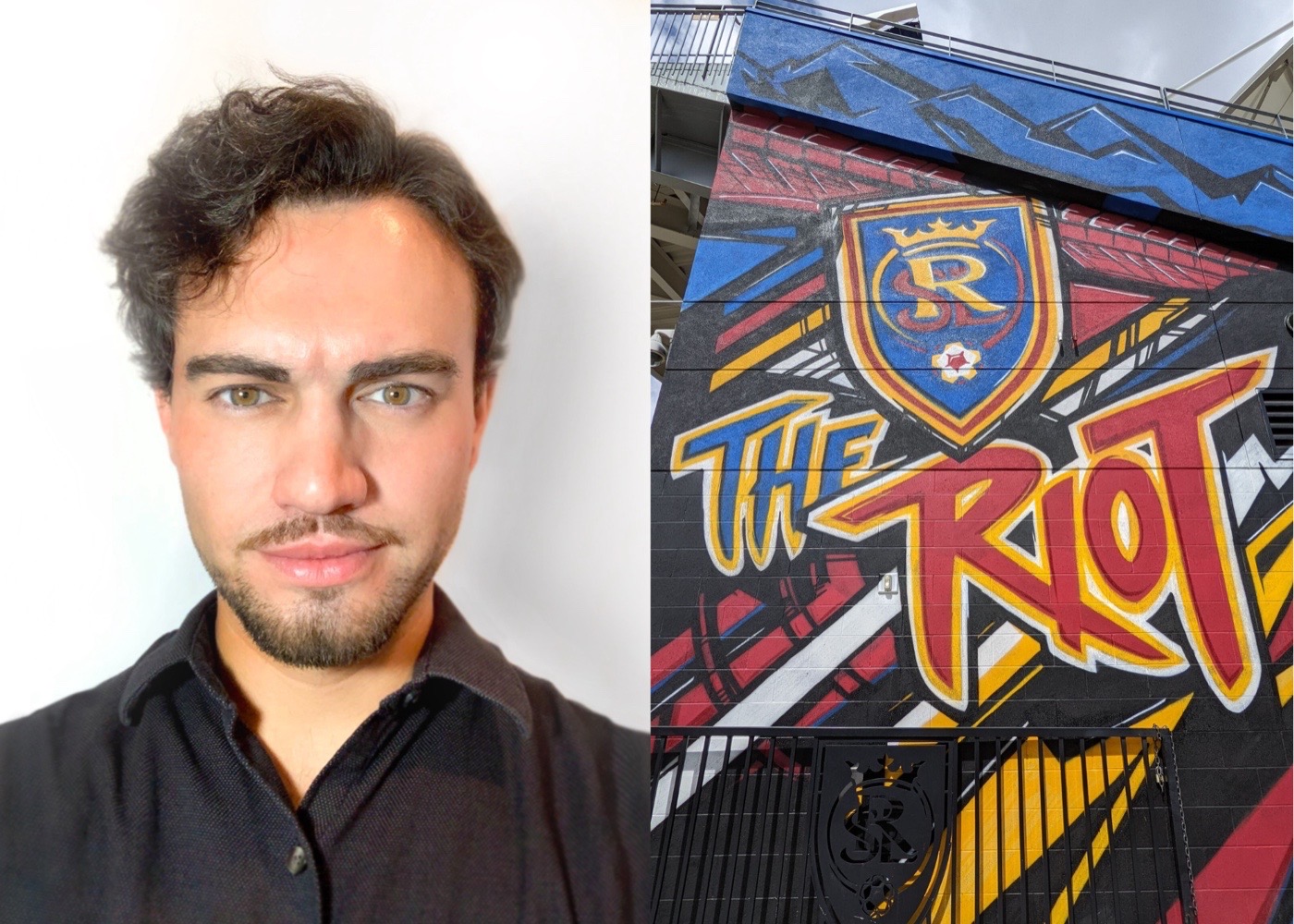By Andrea Whipple
This semester has been one of growth for me, and a time of seeking mentors. As a film major, I’ve realized working in the art industry tends to be a mix of contracted work and freelance. Recently, I had the opportunity to interview Douglas Wilson, Art & Branding Director of University of Utah Athletics. I gained a greater understanding of doing artwork as a job, and the different ways to make a living.
Although Douglas works full time in graphic design, he has also done many projects on the side, particularly with murals. Some of his most prominent work is located at Real Salt Lake Stadium. An alumnus of the University of Utah Department of Art & Art History, he is also currently serving as a Fine Arts Ambassador for the College of Fine Arts.
When I asked Douglas how he got started in graphic design, he told me he did a lot of artwork as a child, encouraged by his grandmother. He kept doing art in high school where his teachers encouraged him to pursue it as a career. However, his family hoped he’d join the military, and they wanted his career to provide financial security. Graphic design seemed like a good compromise between worlds, a blend of artwork and technology. He could keep doing art, but also earn a consistent paycheck. This let him do passion projects and not have to worry about money, though there was less time for side work conversely.
He started as a junior designer doing a lot of home décor, then worked as a sales director. This led him to a contract opportunity at the U and other colleges. Soon, he moved in-house full-time for Utah Athletics, where he eventually became the art director.
As for his mural work, he got involved in high school painting window art and other little projects—mostly for free, just enjoying it. Then the fitness center he worked in contracted him to do a giant painting on a wall in their pool area. He got contracted for other projects, mostly just from word-of-mouth.
This has been where his consistent graphic design paycheck has been helpful. “There were a lot of projects—I was doing them for dirt cheap, or for free. And that helped my name get out there,” he explained. “I know a lot of artists don’t like to hear that because they don’t want to work for free…but I was doing it as a passion-type thing. As I was doing all this freelance work, my name started getting out there more. I’ve been constantly going out there and putting myself out there.”
“Be open, be able to talk and socialize. Learn to put yourself out there, be open."
Douglas has met many people with whom he disagreed — but if he had turned them away, his network would have been smaller. His experience showed me the importance of being open to new ideas, and experimenting with new styles. Part of working with people is learning to compromise. If you disagree with what a client wants, you can either walk away, compromise, or persuade. “You have to be somewhat of a salesman as an artist,” he said.
Smiling, being encouraging, being kind — these go a long way. When he hired his assistant, he was looking not so much for talent but for the person who was most excited, the most willing to learn. He interviewed great artists, but they didn’t feel excited to learn. “I hope they don’t struggle, but I wouldn’t be surprised if they struggle with their careers,” he said. To grow, Douglas would pull himself out of his comfort zone again and again.
We talked about how fun it is to see people light up when they talk about something they’re passionate about. This has been great for him to see in a mentor position—but even, too, with strangers on the street. “When you get people on that subject they love, they light up,” he said. Be curious and be genuine.
Our interview ended with the question: how to get inspired after burnout? Douglas admitted he was just coming out of a period of burnout. He tries to step away from the art mindset. He goes to the gym, goes for a run, plays basketball with friends — and eventually it pushes him back into the art scene. Find something brand new, he suggested.
Try a completely different style, use colors you never use. For his murals, he recently went to Blick for spray paints for the first time and found stuff he’d never tried before. Search for new things: new Instagram accounts, DeviantArt, museums. Some of the most successful Utah Athletic campaigns came after looking in different art industries for inspiration. Lately, Douglas has researched Japanese watercolor paintings. Although they weren’t used in his work directly, it got him fired up and out of burnout.
At the end he gave me some great advice. Keep pursuing, don’t get discouraged. He graduated in 2009 in the recession, and had a terrible starting job, but it eventually led to great opportunities. Keep pushing. Don’t stop learning. He explained, “I think when I get into some of my biggest ruts—my biggest burnout moments—my biggest moments of artist’s block—are the moments when I stop learning, when I just kind of cruise, and don’t push myself anymore.”
ArtsForce Takeaways:
-
Put your name out there—some cheap side passion work may get you out there via word-of-mouth.
-
Keep learning, keep growing. Experiment with new mediums; explore different styles.
-
Work with the company’s desires; be willing to compromise and persuade.

